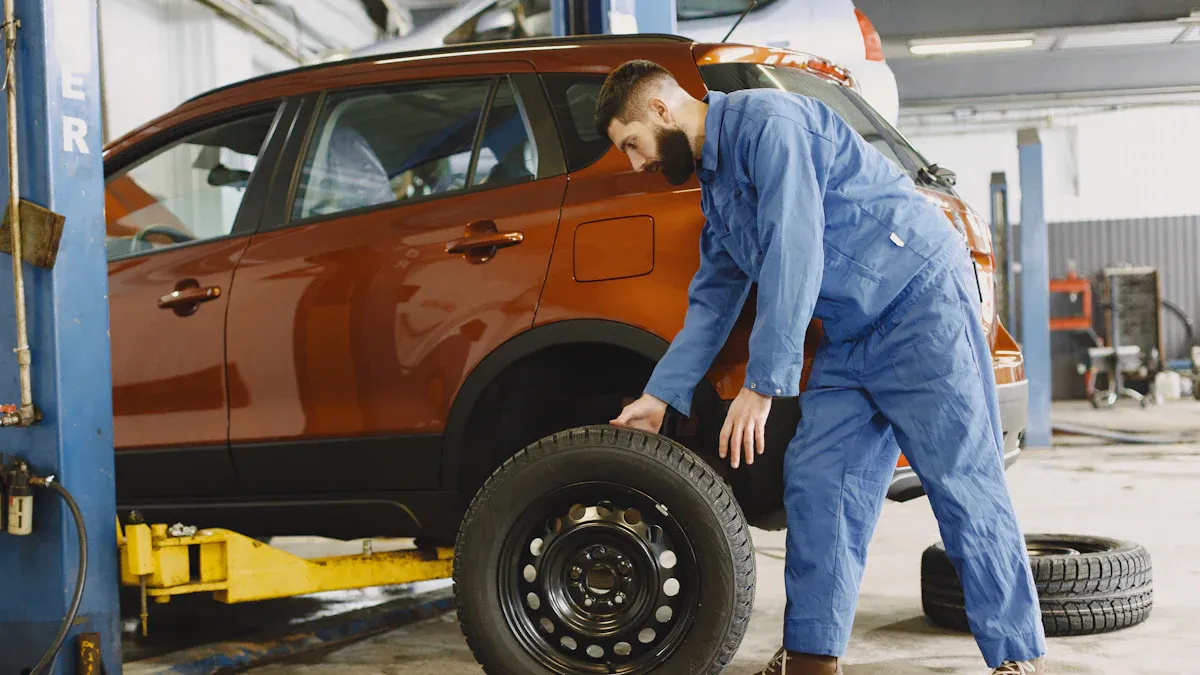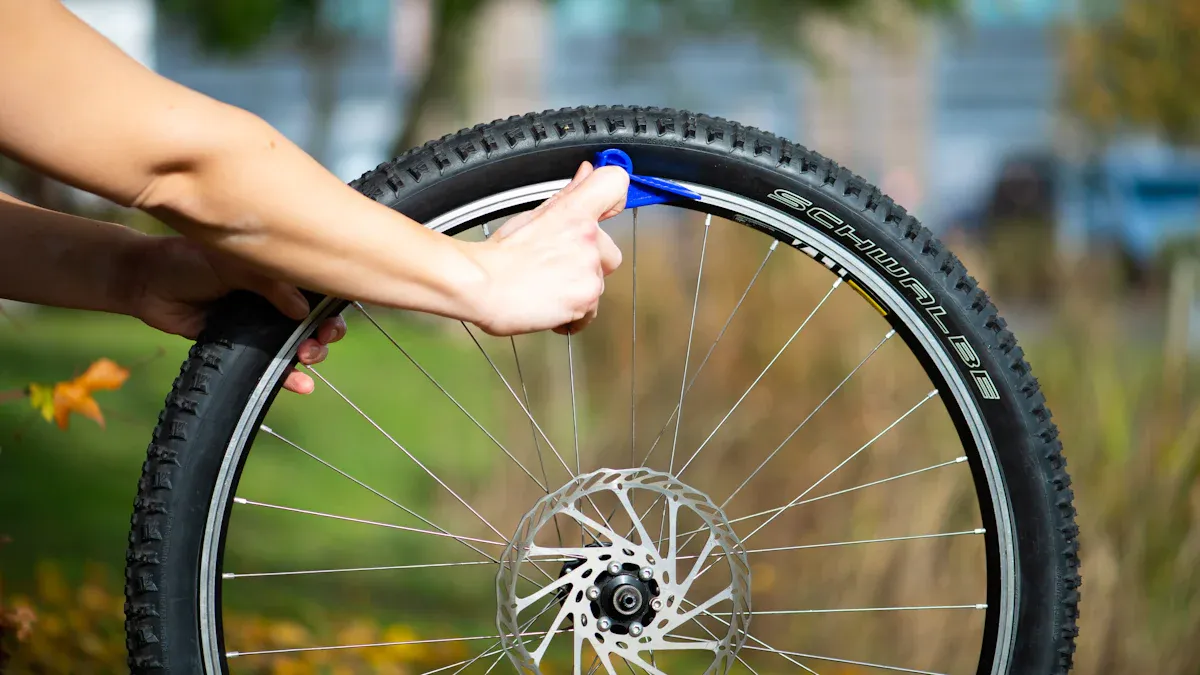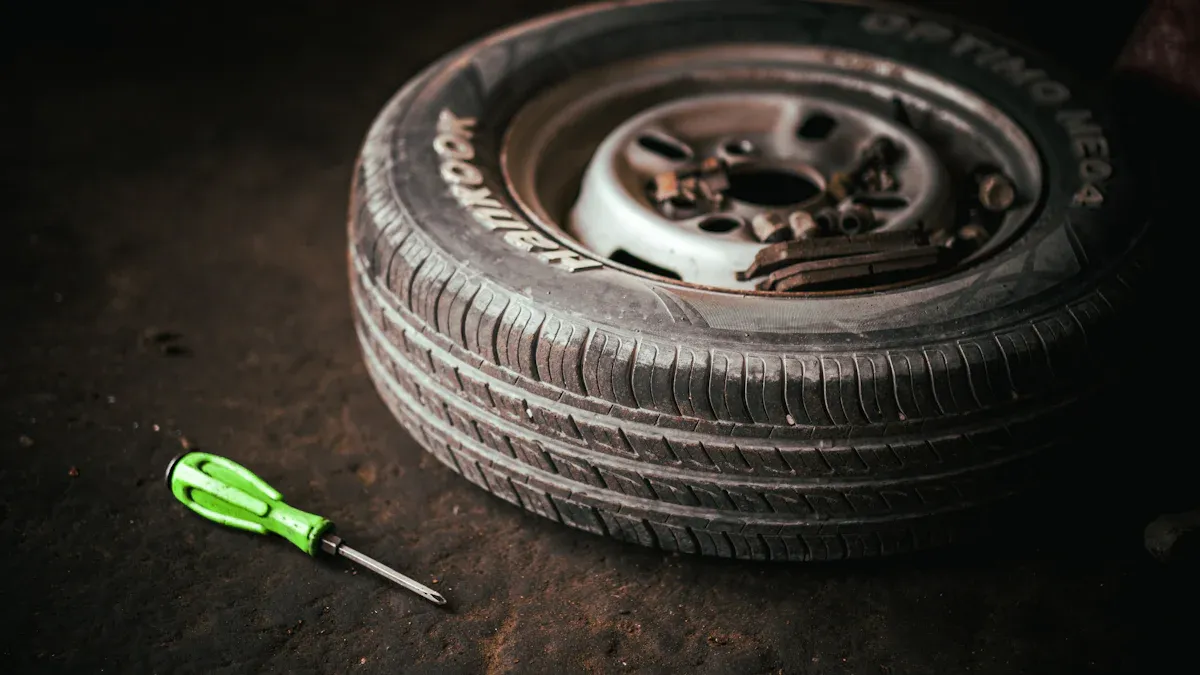
Regularly doing a 48-Hour Tread Inspection is very important for your safety. It also helps you follow the law while driving. If you skip this inspection, you could face serious problems. You might get big fines from the DOT. More importantly, you could put yourself and others at risk. Knowing the legal rules and taking simple steps will keep you safe. Making these inspections a priority protects your vehicle and gives you peace of mind.
Vigtige punkter
Check the tread every 48 hours to keep tires safe and follow DOT rules.
Remember the minimum tread depths: 4/32 inches for steer tires and 2/32 inches for other tires to avoid fines.
Brug right tools like digital tread depth gauges to make inspections easy and correct.
Make a clear inspection schedule and give out tasks to keep tires safe and lower downtime.
Regular checks can save money, boost safety, and improve fleet management.
Tread Inspection Requirements

DOT Regulations Overview
The Department of Transportation (DOT) has strict rules about tire tread depth. These rules help keep everyone safe on the roads. They apply to all commercial vehicles like trucks and buses. You need to know these rules to avoid fines and drive safely.
To follow DOT rules, check your tires often. The DOT has set minimum tread depths for different tire types. If you do not meet these rules, you could face big problems, like fines and safety risks.
Minimum Tread Depths
The minimum tread depth changes based on the tire type. Here’s a quick look at the requirements:
Dæktype | Minimum Dækmønsterdybde |
|---|---|
Steering Axle Tires | 4/32″ |
Other Tires | 2/32″ |
For steer tires, the DOT says the minimum tread depth is 4/32 tommer. This is very important for keeping control while driving. You should change steer tires when they reach this tread depth to stay safe.
For other tires, like drive and trailer tires, the minimum tread depth is 2/32 tommer. Using a tire below this depth can cause loss of grip and higher chances of accidents.
To avoid getting in trouble, watch your tire wear closely. Change tires before they go below DOT limits, which are measured at the lowest part of the tire. Common issues related to tire tread depth include:
Using a drive or trailer tire with tread below 2/32 of an inch (8 points)
Using a tire with fabric showing (8 points)
Keep in mind, about 10% of out-of-service violations come from simple tire issues. Regularly doing a 48-Hour Tread Inspection can help you stay within the rules and keep your vehicle safe on the road.
Risks of Non-Compliance
Financial Penalties
If you skip the 48-Hour Tread Inspection, you could face big fines. The Department of Transportation (DOT) gives fines for many vehicle rule violations. These fines can be as high as $10,000. Even small mistakes can lead to large fees. Tread inspection problems are treated like serious mechanical issues. If your tires do not meet the required tread depth, your vehicle might be taken out of service (OOS).
Here are some common financial penalties you might face:
Fines for using tires that are below the minimum tread depth.
Costs from having your vehicle out of service.
Higher insurance costs after violations.
Safety and Liability Risks
Not doing regular tread inspections can cause serious safety problems. Tires with too little tread can create dangerous situations on the road. Here are some major risks from not checking your tires:
Dækeksplosioner can happen if the tread is too low.
Reduced traction makes it easier to lose control, especially in bad weather.
Compromised braking performance increases the chance of accidents.
Den minimum dækmønsterdybde is 4/32 inches for front tires and 2/32 tommer for others. Inspectors check for cuts, bulges, or other damage that can weaken tires. Driving on bald tires can lead to losing control, especially in poor weather.
Also, if an accident happens because of not checking tire tread, you could be legally responsible. Fleet operators may be blamed for not keeping up with maintenance if a tire blowout causes an accident. This can lead to claims for damages from mechanical failures.
48-Hour Tread Inspection Implementation
Creating an Inspection Schedule
Making a good inspection schedule is very important for tire safety. Here are some tips to help you set up a 48-Hour Tread Inspection schedule:
Best Practice | Beskrivelse |
|---|---|
Develop a plan | Make a clear plan for tire care, including a 48-hour inspection schedule. |
Assign responsibilities | Give specific jobs to people, like drivers checking tire pressure and tread wear. |
Maintain records | Keep detailed notes of inspections and maintenance work for tracking and accountability. |
Conduct regular inspections | Plan regular checks to make sure tires are safe and working well. |
Utilize fleet management software | Use technology to help with scheduling and keeping records for tire inspections. |
Regular inspections help you follow safety and environmental rules. Not following these rules can lead to big fines. This shows how important it is to have a good inspection schedule.
Tools for Effective Inspections
Using the right tools can make your tread inspections more accurate and efficient. Here are some helpful tools and technologies:
Digital tread depth gauges give precise readings and can check multiple spots, showing wear patterns.
Tread depth scanners provide steady and exact measurements all around the tire.
Advanced tire monitoring services, like Bridgestone’s IntelliTire, check tire pressure and temperature in real-time, cutting down on maintenance time.
These tools not only make inspections more accurate but also help you plan when to replace tires. They can send data wirelessly to devices, making it easier to create detailed inspection reports. These reports help you talk to customers about tire conditions.
Investing in better tread inspection tools can save you money in tire management. By using these technologies, you can keep your fleet safe and compliant on the road.
Benefits of Regular Inspections

Øget sikkerhed
Regular inspections make you and your vehicle much safer. Doing a 48-Hour Tread Inspection can help avoid dangerous situations on the road. Here are some important benefits:
Reduced accident rates: Driving with tires that have low tread depth raises the chance of blowouts and accidents. Checking tire tread depth often is key for safety rules and keeping the roads safe.
Improved traction: Good tread depth helps stop hydroplaning by moving water away from the tire. This keeps your tires in touch with the road, especially when it’s wet.
Shorter stopping distances: Tires with enough tread depth help you stop faster, which is very important in emergencies. This can really help you avoid crashes.
Better vehicle handling: Deeper treads make your vehicle more stable when driving fast or turning sharply. This gives you better control, making your drive safer.
Improved Fleet Management
Regular tread inspections also help manage your fleet better. Sticking to a regular inspection schedule brings many long-term benefits:
Reduced downtime: Checking tires often can stop blowouts, which cuts down on vehicle downtime. A quick inspection takes just a few minutes, while a blowout can waste a whole day of work.
Cost savings: Daily inspection programs can save a lot of money. Transportation companies can see a return on investment (ROI) of 5-7 times in about 10 months, lowering unexpected downtime and accidents.
Optimized maintenance: Fixing tire issues right away keeps things running smoothly. This prevents expensive repairs and delays, helping your fleet work well.
Increased safety compliance: Keeping up with inspections helps you follow DOT rules. This protects your drivers and boosts your company’s reputation.
By making regular inspections a priority, you can keep your drivers and vehicles safe while improving fleet management overall.
Checking your tire tread regularly is very important for safety and following the rules. By sticking to a 48-Hour Tread Inspection plan, you can avoid big fines and keep your vehicle safe. Take steps now by making a clear inspection schedule. Here are some tips to help you follow the rules better:
Look at past problems to find weak spots.
Focus on tire care with a proactive maintenance plan.
Provide complete training for drivers.
Doing these things will help your fleet in the long run. You will have less downtime, save money, and improve safety compliance. Make these inspections a priority to keep your drivers and business safe.
Ofte stillede spørgsmål
What is the purpose of the 48-hour tread inspection?
The 48-hour tread inspection makes sure your tires follow DOT rules. This check helps keep you safe on the road and stops expensive fines.
How often should I perform tread inspections?
You should check your tread every 48 hours. Regular checks help you find problems early and keep your vehicle following DOT rules.
What tools do I need for effective tread inspections?
You need a digital tread depth gauge or a tread depth scanner. These tools give you exact measurements and help you watch tire wear closely.
What happens if I ignore tread inspections?
If you ignore tread inspections, it can cause big safety problems. You might get DOT fines, have more accidents, and risk vehicle downtime.
How can I train my drivers for better inspections?
Hold training sessions that focus on tire care and inspection skills. Use hands-on practice to help drivers see why regular tread checks are important.
Se også
Vigtigheden af at overvåge dækmønsterdybden for sikkerhed
Brug af en dækmønsterdybdegenerator til præcise målinger
Forståelse af Smart Dæk Tredybredde Detektorer og deres Funktionalitet






